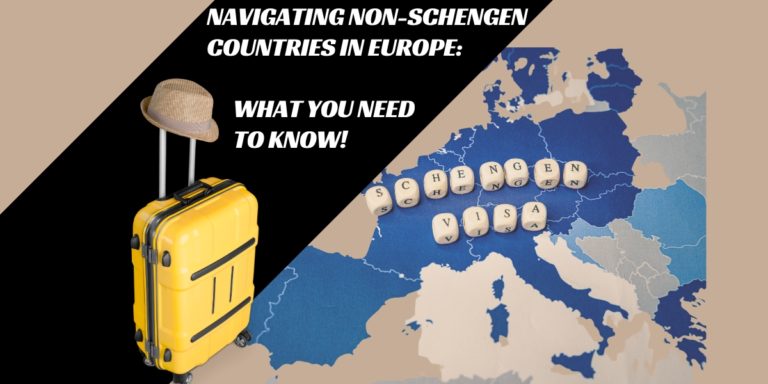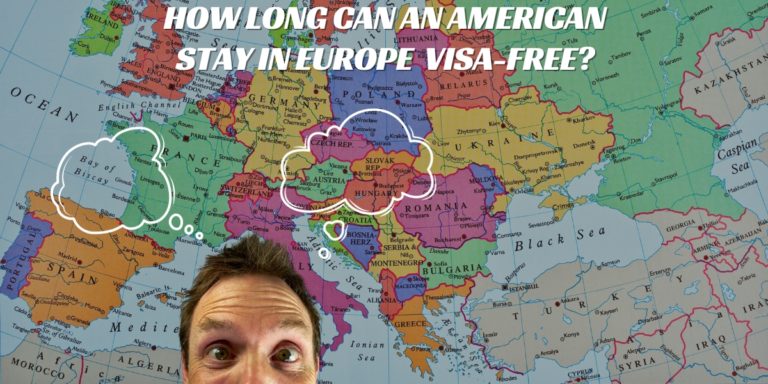How to Road Trip Across Europe Long-Term as an American: Unlocking the Secrets of Bilateral Visa Agreements
Discover how to extend your European road trip with bilateral visa agreements.
Europe’s allure is undeniable. From the sun-soaked beaches of Spain to the snow-capped peaks of the Alps, the continent offers an array of experiences. But for many Americans, the standard 90-day Schengen entry permit feels restrictive.
What if you want to explore Europe leisurely, soaking in each country’s unique charm? Enter the magic of bilateral visa agreements.
What is a Bilateral Visa in Europe
A “bilateral visa” in Europe usually refers to visa arrangements between countries that allow certain exemptions or special provisions beyond what is generally agreed upon in broader agreements, such as those under the Schengen Area regulations. These bilateral agreements can affect how visas are issued, the length of stay, and the terms of travel between the two specific countries.
For instance, some European countries have bilateral agreements with other nations that allow for longer stays than what is typically permitted under the standard Schengen visa rules.
These arrangements are often historical and can vary significantly between different pairs of countries, depending on diplomatic, economic, or cultural ties.
Understanding the Schengen Zone
Before diving into bilateral agreements, it’s essential to grasp the basics of the Schengen Zone. Comprising 26 European countries, the Schengen Zone allows for passport-free travel across its members.
Schengen Visa Rules
- Visa Application: Applicants must apply for a Schengen entry permit in the country where they plan to spend the most time or where they will enter the Schengen Area if spending equal time in multiple countries.
- Visa Requirements: This typically includes a completed visa application form, passport photos, travel itinerary, proof of accommodation, travel insurance covering medical emergencies, and evidence of financial means to support the stay.
- Visa Fees: The Schengen entry permit has a standard fee, but fees can vary based on the applicant’s age, nationality, and other factors, such as the purpose of the visit.
- Area of Validity: A Schengen short-term visa allows travel across all member countries without internal border checks. The Schengen countries include major EU countries like Germany, France, Italy, Spain, and others, and non-EU countries like Norway and Switzerland.
- Multiple Entries: Some Schengen visas allow multiple entries, meaning holders can leave and re-enter the area if they do not exceed the 90-day limit.
These rules are designed to standardize entry permit policies across the Schengen Area, simplifying travel for tourists and business visitors while ensuring security within the borders. However, for Americans, there’s a catch: you can only stay for 90 days within a 180-day period. But what if you want to stay longer?
The Power of Bilateral Visa Agreement
Historically, before the Schengen agreement, many European countries had individual travel agreements with the USA. Some of these agreements still exist, allowing Americans to stay longer than 90 days. These bilateral visa agreements are the key to unlocking a long-term European road trip.
Countries like France, Spain, Italy, and Belgium, among others, have these special arrangements. For instance, after 90 days in the Schengen Zone, you could head to Italy for an additional three months, thanks to the bilateral agreement between the U.S. and Italy.
Extended Stay in Europe
Suppose you want to extend your European stay beyond the typical tourist entry permit limits. In that case, you can consider a few different options and strategies. Each approach varies depending on the purpose of your stay, whether it’s for tourism, study, work, or other reasons.
- Long-Term Visas
Some European countries offer long-stay visas that allow you to reside for more than 90 days to a 180-day period of time. These visas often require an application process similar to a residence permit. Types of long-stay visas include:
- Student visas: For those enrolled in a full-time study program.
- Work visas: For those with a job offer from a company based in the country.
- Family reunification visas: For those joining a family member who resides legally in the country.
- Temporary Residence Permits
If you plan to stay longer, you might need to apply for a temporary residence permit. The requirements vary by country but generally involve proving financial stability, having health insurance, and possibly passing language and integration tests.
- Bilateral Visa Waiver Agreements
As mentioned previously, some countries have bilateral agreements that allow citizens from certain countries to stay longer than the standard 90 days allowed under the Schengen Agreement. For example, France and the United States have an agreement that permits U.S. citizens to stay in France for up to 90 days beyond the Schengen limit.
- Extending Schengen Visa
In some cases, you can apply to extend your Schengen entry permit while in Europe. However, this is typically only possible due to serious personal reasons such as illness or other unforeseeable circumstances that prevent travel.
- Switching Visa Status
If you are already in Europe on a tourist entry permit and decide you want to study, work, or live there, you might be able to switch your visa status. This process varies greatly from country to country. Usually, it requires returning to your home country to apply for the appropriate entry permit.
- Digital Nomad Visas
Some European countries, like Estonia, Portugal, and Croatia, have started offering ‘digital nomad visas,’ which allow individuals to live and work remotely for extended periods. These visas are aimed at those who can work independently of location, provided they have a stable income from a remote job or their own business.
Planning Your Stay
When planning an extended stay in Europe, it’s crucial to:
- Research thoroughly: Every country has its own rules and requirements.
- Consult the embassy: Always get information directly from the embassy or official government website of the country you plan to visit.
- Understand the obligations and requirements: From health insurance to proof of income, ensure you meet all the stipulated requirements.
Benefits of a Long-Term European Road Trip
–Cultural Immersion: Explore diverse cultures, languages, and traditions firsthand by visiting small towns and participating in local festivals.
–Flexibility and Freedom: Adjust your travel plans based on your interests and local advice, allowing more time in places that fascinate you.
-Scenic Routes: Access some of Europe’s most beautiful and often remote routes, from fjords in Norway to the lavender fields of Provence.
–Cost-Effectiveness: Save on travel costs compared to flying or using trains, with options to cook and camp, reducing expenses further.
-Comfort and Convenience: Travel comfortably with the ability to carry more luggage and take breaks at your convenience.
–Personal Growth: Enhance your adaptability and problem-solving skills through challenges and interactions with diverse cultures.
–Access to Remote Destinations: Explore off-the-beaten-path locations that are tough to reach via public transport.
-Building Lasting Memories: Create enduring memories and strengthen bonds with those you travel with through shared experiences and adventures.
Things to Keep in Mind
- Always Check the Latest: Bilateral agreements can be subject to change. Always check the latest entry permit and entry requirements with the respective embassies or official websites.
- Vehicle Regulations: If you’re driving your car, be aware of each country’s vehicle regulations, emissions standards, and toll systems.
- Cultural Sensitivity and Language: Respect local customs and try to learn basic phrases in the languages of the countries you visit. This can greatly enhance your interactions with locals.
- Emergency Contacts: Keep a list of emergency contacts, including local emergency services, your country’s embassy, and contacts back home.
Conclusion
Europe is not just a destination; it’s an experience. For those willing to navigate the complexities of bilateral visa agreements, the adventure can extend well beyond a standard vacation. If you’ve ever dreamed of a grand European road trip, now is the time to make it happen. With careful planning and a spirit of adventure, Europe’s diverse roads, rich cultures, and stunning landscapes can be yours to explore for the long term. Happy travels!






